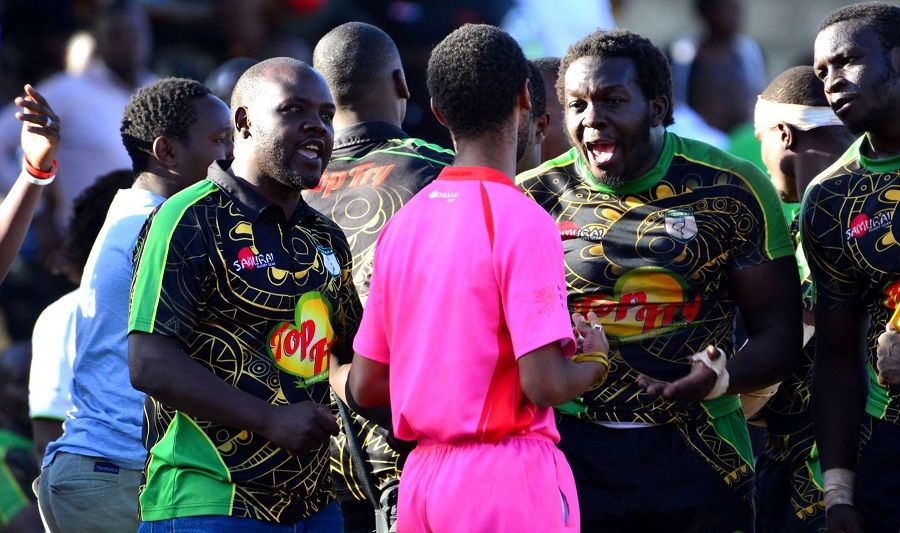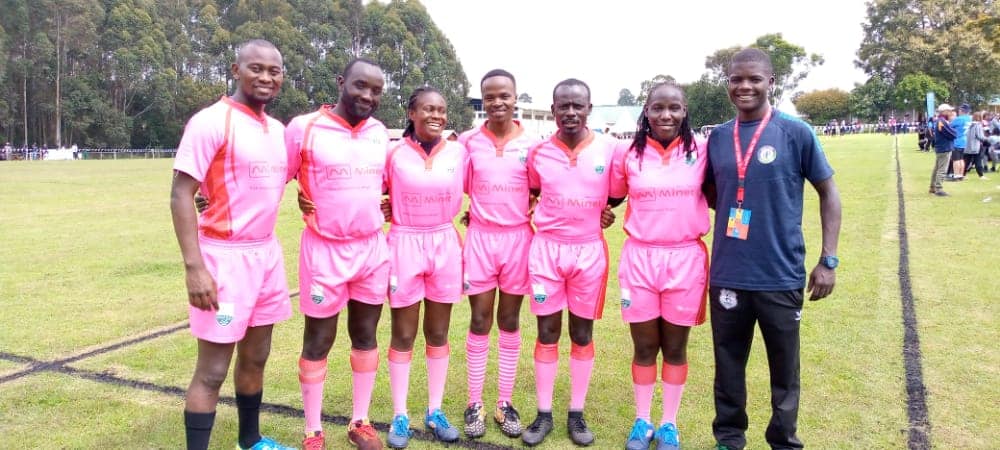For reggae enthusiasts, you are probably familiar with Max Romeo’s – One Step Forward tunes. Literary buffs, you may relate to the book Three Steps Forward, Two Steps Back by Charles R. Swindoll.
Finally, for those who have followed the Kenya Rugby Referees Association (KRRA) journey so far, this article may resonate similarly. Has KRRA made any Progress? Sure, it’s there if you squint hard enough.
Yes, There’s Been Progress
As an educator, I will start with the positives. There have been some genuine wins in recent years. For starters, the number of referees has steadily increased. Although the exact numbers are not publicly available, I estimate there would be more than 200 active referees. Noteworthy, more female referees have been added to the fold. We have also seen more youths taking officiating roles. The rise of youth referees is undoubtedly a major step forward.
We’ve also seen the introduction of coaches for match officials. Even the people who blow the whistle need a whistle blown on them sometimes. These coaches have helped train referees to improve decision-making, consistency, and how not to crumble under pressure.
Although still struggling, allowances for match officials have improved. Maybe not yet satisfactory, but we can all agree it is better than a decade ago.
The devolution of the national referees’ society is another one for the win column. Through decentralization, regional rugby refereeing bodies have more power. Whether this system has been effective, remains to be another story. If the idea was to spread the wealth of refereeing talent, we can say the mission is partially accomplished.
The Crisis Within
Now, for every step forward, rugby refereeing in Kenya seems to take two steps back or maybe even a full tumble down the stairs.

Nakuru RFC’s Oscar Ouma consults referee in apast clash. Photo Courtesy/ Denis Acre-half
Let’s start with the exchange programs. Remember those? The glorious days when Kenyan referees would travel abroad and bring back international expertise? Exchange programs are dwindling to the point of near extinction. It’s like trying to improve your cooking skills by eating your burnt food. It doesn’t work.
Currently, we boast a large pool of development referees, a critical phase in establishing a strong foundation. However, there is a dilemma in the transition. It’s one thing to train referees and get them on the field, but without a clear pathway for advancement, we risk stagnation. Talent management needs to take center stage if we want sustainable growth.
Talent management involves focusing on referees within the age bracket of 20-27. Scientifically, this is the prime age range where officials can develop the physical and mental endurance required for top-level performance. If Kenya’s dream of having referees officiating at HSBC 7s or Rugby World Cup is to be realized, we need to identify and nurture referees within this demographic. Investing in their development through coaching, international exposure, and consistent support will ensure that they not only stay in the game but thrive at the highest level.
Politics. What would KRRA be without the usual politics to muck things up? Sceptics have argued that referee appointments have become a game of who you know rather than how good you are. That statement may be 50% right but 100% wrong. Talented referees sometimes get sidelined in favour of those with the right connections, leaving merit at the mercy of office politics.
EDITOR’S PICKS:
- Follow us on Scrummage Africa FB
- The story of Moreen Muritu
- Kanyanya’s transition from rugby pitch to police beat
- Mbeche’s epic ride in push for Eye Care awareness
We also can’t forget the shrinking pool of Kenyan referees in the international setup. Once upon a time, Kenya had referees making waves on the global stage. These days, we’re lucky to get even a splash. Fewer referees are making it to international tournaments, and the reasons are baffling. Whether it’s lack of exposure, inadequate training, or, politics, it is a clear regression.
Finally, there’s the noticeable lack of roundtable meetings with coaches before the season starts. Unlike yesteryears, where before the start of the 7s or 15s season, referees and coaches would convene, nowadays it’s a rarity to occur. These were once crucial for aligning referees and coaches on game management, new rules, and generally avoiding unnecessary confrontations. Now? Not so much. It’s like going into battle without knowing which side you’re on and then wondering why everything falls apart mid-battle.
So, What Now?
For all the progress Kenya rugby refereeing has made, it’s clear there’s plenty of room for improvement. Maybe it’s time to revive those exchange programs and send referees abroad again for genuine growth. I understand the financial implications that would be associated with this, maybe Kenya Rugby may not be helpful either, but the goodwill of KRRA with other partners may see such dreams come to fruition.
We need better pathways and more exposure if we want more Kenyan referees on the international stage. Better pathways that do not not exist on a document but we need to walk the talk. Let’s also bring back those pre-season roundtables with coaches. Such communication can go a long way in avoiding match-day disasters.

Rift Valley Region Referee’s award winners. Photo Courtesy/RVRS.
Kenya rugby referees have come a long way but have also stumbled a bit. For every success: more referees, female representation, and better performance reviews, there is a frustrating setback. If we can get out of our way and focus on merit and growth, there’s no reason Kenyan referees can’t rise to new heights.
Until then, we’ll just have to settle for the two-step dance we’ve been doing – one step forward, two steps back.
The writer of this piece is a referee and also the author of the book ‘Redefining a Kenyan Referee’



